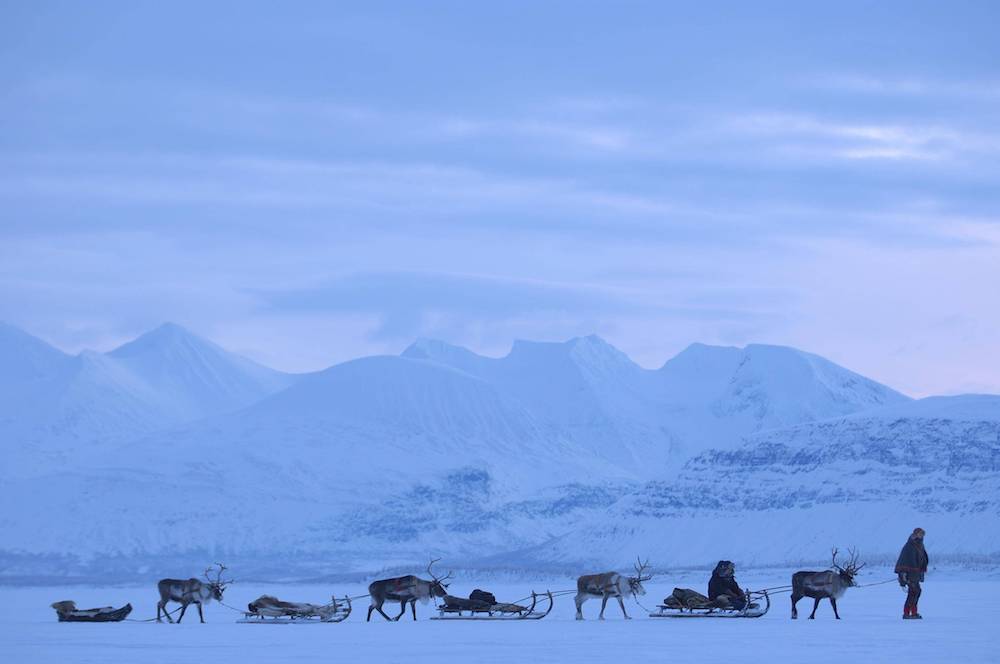Sámi advocates in Sweden fear inadequate schooling, borders contribute to language decline
The annual review of the Sámi languages in Sweden finds they continue to decline.

Two decades after they were recognized as national minority languages in Sweden, the Sámi languages still face a double whammy of eroding opportunities for use amongst fluent speakers and inadequate educational opportunities in the public school system, the annual check of the languages’ status has concluded.
“Factors such as a lack of natural venues for the use of language and the development of new terminology, as well as a non-functioning educational chain from preschool to adulthood speed up the ongoing language exchange process,” the Sámi Language Center concluded in its report, published this week.
Together with, Finnish, Meänkieli, Romani and Yiddish, the five languages spoken by Sweden’s 40,000 Sámi, are considered minority languages in Sweden. In the case of the Sámi languages, this requires local authorities in areas where there is a significant Sámi population to offer public services and schooling in a Sámi language.
Taken as a whole, the number of elementary school students enrolled in minority-language schooling increased during the previous decade after a period of decline and is now on a par with where it was when the minority-language act was adopted.
However, the number of young people learning Sámi at school declined by a third last year. Some of the blame, according to parents belongs to the Sámediggi, the representative body for people of Sámi heritage in Sweden; last year, 115 Sámi parents sent an open letter to the assembly to call on it to do more to support their efforts to make sure their children can speak a Sámi language.
“The situation in the educational system is serious,” Ingegard Vannar, the head of the Sámi Language Center. “The Sámi Language Center finds that parents have higher expectations and ambitions for the Sámi languages than what can be met the teaching offered in elementary schools.”
Fluent speakers of Sámi readily speak Swedish when necessary, the center found. While this may be practical, it contributes to the decline of the language in the long term. In order to counteract this trend, the center has encouraged Sámi speakers to use their language on social media and during formal settings, which, it says, has traditionally been an area where Swedish was preferred.
[How a collaboration with Disney shaped the way Sámi cultural details were portrayed in Frozen 2]
Another area of concern brought up in this year’s status report is the potential for Sámi languages to develop differently in Sweden, Norway, Finland and Russia as Sámi speakers in those countries increasingly interact more with their majority-language speaking populations than with other Sámi across Sápmi, the traditional Sámi homeland.
“The Sámi language crosses national borders, so it is important that the language is standardised across national borders,” the center said. “It is of great importance that the Sámi languages do not to develop in different directions in the different countries.”
A similar process was being seen during the pandemic, according to the centre, as social-distancing requirements and closed borders were preventing Sámi from gathering. Should the measures remain in place for an extended period, it predicts that the loss of social contact will have disastrous consequences for the languages.
“We have had limits placed on what we can do in our daily lives so we avoid coming into physical contact with others. This is comparable with the measures taken after the Chernobyl disaster that meant that animals couldn’t be butchered in a traditional manner in the areas that were most affected by radioactive contamination. This limited the transfer of traditional knowledge.”